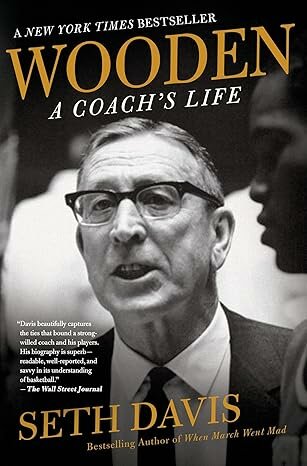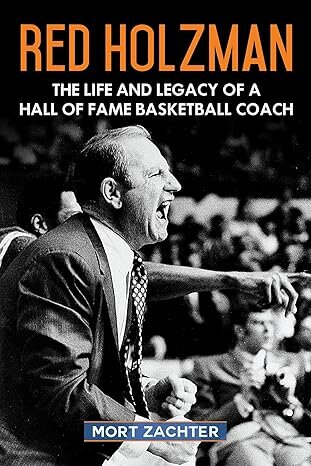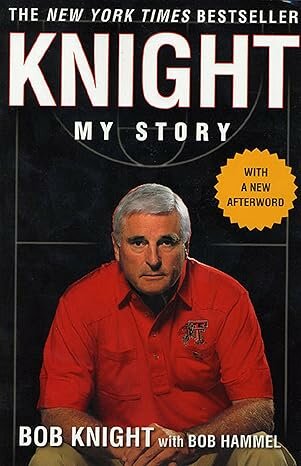'Globetrotter: How Abe Saperstein Shook Up the World of Sports'
A 5'3 pudgy immigrant creates the Harlem Globetrotters & pioneers the 3-point shot
Authors Mark and Matthew Jacob are out with a new book, ‘Globetrotter: How Abe Saperstein Shook Up the World of Sports’.
Captivating and entertaining, the book tells the story of an unlikely Jewish kid who immigrated from Europe in 1907 and rose to become one of the most influential figures in the history of basketball.
We asked Mark, former metro editor of the Chicago Tribune, what made Abe Saperstein such a lasting and inspiring personality in the world of sports.
Is this your first book, and what spurred you to write about Abe Saperstein?
This is my second book with my brother Matthew. We wrote a previous book called What the Great Ate about the dining habits of famous people in history.
We wanted to write a biography next, and a friend suggested Abe Saperstein. We both love history and sports, so it was a natural.
BUY- 'Globetrotter: How Abe Saperstein Shook Up the World of Sports'
What surprised you most in your research?The people who have heard of Saperstein know he created the Harlem Globetrotters. But we initially didn’t know — and hardly anyone knows — that he pioneered the three-point shot in basketball. Caitlin Clark and Steph Curry owe him a debt.
He also was a key figure in the financial survival of Negro Leagues baseball and the early National Basketball Association. And he’s the reason pitching great Satchel Paige finally got into the major leagues.
Tell us about Saperstein's background as a young Jewish kid growing up in Chicago?
Saperstein was born in London, the child of Polish Jewish parents. At age 5, he came to Chicago with his family and moved into a German and Irish neighborhood on the North Side where there were hardly any Jewish families.
He quickly learned to get along with all sorts of different people. He loved sports and played second base for a Roman Catholic school’s baseball team. How did a 5'3” man get involved in a tall man's sport?
Saperstein always loved basketball, despite the height challenge. At that time, Chicago public schools had three categories of leagues, based on weight, so Abe got a chance to play in the smallest category, bantamweight.
Later he took a coaching job in the city’s parks and met athletes and coaches from across the city.
How did he create the Harlem Globetrotters?
It’s a long story, but the short version is that Black players and coaches on Chicago’s South Side hired Saperstein to arrange barnstorming games for them with white teams in neighboring states.
He eventually took over one of the teams and took them on tour in his Model T Ford. How did white basketball fans react when Saperstein showed up with his players?
The Harlem Globetrotters weren’t from Harlem. He put “Harlem” in the name so the mostly white towns they visited would know a Black team was coming to town and there wouldn’t be any unpleasant surprises.
The Trotters were often far superior to their opponents, and their comedy routines were a way to keep the fans entertained while not embarrassing their opponents by running up the score too much with more conventional basketball.
What made him such a shrewd businessman?
Persistence. He and his team really struggled in the early years, but they steadily built up a fan base. Saperstein was a great people person, and he made friends with sportswriters and promoters all over the country — and eventually all over the world.
SIGN UP FOR OUR FREE WEEKLY NEWSLETTER, OR JUST $36/YR WITH ARCHIVES, APP & AUDIO
What game(s) stand out most in his managerial/coaching career?
Two games stand out: In 1940, the Globetrotters won the national pro basketball tournament in Chicago, which meant they weren’t just the most entertaining pro team around — they were the best.
And in 1948, also in Chicago, they shocked sportswriters by defeating the team that everyone thought was the finest pro team around, the Minneapolis Lakers, featuring George Mikan.
Saperstein was frustrated that the NBA wouldn’t give him a team, so he started his own league, the American Basketball League, in 1961. He needed a gimmick to set his league apart from the NBA, so he adopted the 3-point shot, which had been used only a few times before as an experiment in non-league college games.
What did the basketball world think of the 3-point shot when it was first introduced?
The fans liked it, but much of the basketball world disapproved. The NBA certainly had no interest. After Saperstein’s ABL folded in late 1962, no major league had the 3-point rule.
The American Basketball Association started in 1967, a year after Saperstein’s death, and it adopted the rule. But the ABA folded in 1976 and the NBA didn’t pick up the rule until 1979. It came into the college game in 1987. What other changes was Saperstein responsible for in the game of basketball?
The fast-break style and fancy passes that now characterize the NBA were a hallmark of the Globetrotters. As worldwide travelers and evangelists for basketball, the Trotters deserve a lot of credit for the global popularity of the sport.
How is Saperstein remembered today and what is his greatest legacy?
His greatest legacy is the Globetrotters, who are still delighting big crowds as they near the 100th anniversary of the team. Saperstein was an advocate for trying new things to delight the fans, which annoyed some sports purists.
But in many ways, Saperstein’s fan-friendly approach has prevailed. Saperstein should be remembered for much more than just the Globetrotters. He should be remembered for his contributions to the Negro Leagues, to the NBA, to helping integrate baseball’s major leagues.
And Saperstein’s tactics ought to be taught to anyone who wants to work in sports promotion. Saperstein’s amazing career offers a lot of lessons.
SIGN UP FOR OUR FREE WEEKLY NEWSLETTER, OR JUST $36/YR WITH ARCHIVES, APP & AUDIO
Mark Jacob is the co-author of eight books about sports, history, and photography. He is former metro editor of the Chicago Tribune and created the newspaper’s popular “10 Things You Might Not Know” history feature. Jacob’s articles have been published in Library Quarterly, Chicago Reader, Chicago magazine and Chicago History magazine. He is a former adjunct professor at Northwestern University.
Matthew Jacob is the co-author of What the Great Ate: A Curious History of Food and Fame with his brother Mark. He started his career as a journalist, working as a sportswriter and city council reporter, receiving awards from the Arkansas Press Association. Jacob is a member of the Society for American Baseball Research and has written for such outlets as the Boston Globe, Detroit Free Press, Los Angeles Times, and USA Today.

.jpg)














